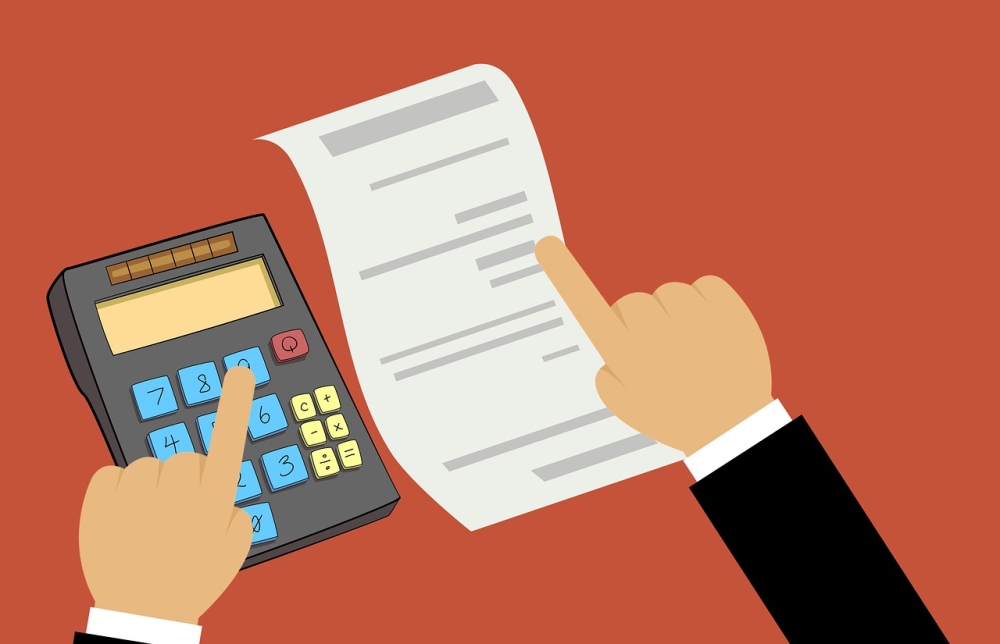Bridging the gap to homeownership is an exciting journey, and understanding the different types of home loans is crucial to make informed decisions.
In this comprehensive guide, we delve into the diverse landscape of home financing in the Philippines. From traditional mortgages to government-backed options, alternative financing, and even refinancing, we’ll navigate the intricacies together.

So, whether you’re a first-time buyer or considering a change, let’s explore the possibilities and find the perfect home loan that suits your needs.
Traditional Home Loans
Traditional home loans form the backbone of real estate financing, offering stability and familiarity to borrowers. Let’s explore the characteristics and options available within this popular category.
A traditional home loan, also known as a conventional mortgage, is a type of loan offered by banks and financial institutions to help individuals purchase residential properties. These loans come with various features and repayment terms, providing flexibility to borrowers based on their financial goals and preferences.
Borrowers have the option to choose between fixed-rate home loans and adjustable-rate home loans. A fixed-rate home loan offers a consistent interest rate throughout the loan term, providing predictability in monthly payments.
On the other hand, adjustable-rate home loans have an interest rate that can fluctuate based on market conditions, potentially leading to varying monthly payments.
Traditional home loans have their own set of advantages and disadvantages. While fixed-rate loans provide stability and protection against interest rate increases, adjustable-rate loans may offer lower initial interest rates, making them attractive to certain borrowers.
However, it’s essential to consider your financial circumstances and long-term plans before deciding on the type of traditional home loan that best suits your needs.
Government-Backed Home Loans

In the realm of home financing, government-backed loans emerge as sturdy pillars, offering support and opportunities to aspiring homeowners. Let’s uncover the treasure trove of benefits and explore the various government-backed home loan programs available in the Philippines.
Government-backed home loans are mortgage programs supported by government agencies to facilitate affordable housing options for Filipinos. These loans come with distinct features and eligibility criteria, aimed at providing assistance to a wide range of individuals and families.
PAG-IBIG Fund Home Loan Program
One notable government-backed home loan program in the Philippines is the Pag-IBIG Fund Home Loan Program. Think of it as a shining beacon, guiding individuals towards their homeownership dreams.
The Pag-IBIG Fund, also known as the Home Development Mutual Fund, offers competitive interest rates, flexible loan terms, and accessible financing to qualified members. This program acts as a supportive hand, fostering a sense of belonging and stability in the realm of homeownership.
- Competitive interest rates: Enjoy rates that are often lower compared to conventional loans, reducing the overall cost of borrowing.
- Flexible loan terms: Tailor your repayment period to fit your financial capabilities, ensuring manageable monthly installments.
- Accessible financing: Qualified members can borrow up to a certain percentage of the property’s appraised value, making homeownership more attainable.
Socialized Housing Loan Program
The Socialized Housing Loan Program extends its arms to those in need of affordable housing solutions. It serves as a nurturing garden, cultivating opportunities for low-income families to secure decent homes.
Through subsidized interest rates, extended repayment terms, and simplified requirements, this program opens doors that might otherwise seem closed.
- Subsidized interest rates: Benefit from lower interest rates, easing the financial burden of repayment.
- Extended repayment terms: Longer repayment periods provide breathing room for low-income families to meet their monthly obligations.
- Simplified requirements: The program streamlines documentation and eligibility criteria, making it more accessible to those in need.
While government-backed home loans provide numerous advantages such as lower interest rates, longer repayment periods, and favorable terms, it’s important to evaluate the specific eligibility criteria and requirements for each program. Navigating this landscape ensures that you harness the full potential of these opportunities and embark on a path towards owning a home that exceeds your expectations.
The Benefits of Government-Backed Home Loans
Government-backed home loans offer distinct advantages, including:
- Lower down payment requirements: Enjoy the potential for reduced upfront costs, easing the financial strain of home acquisition.
- Greater financing options: These programs cater to a broader range of income brackets, ensuring that various segments of society can access affordable housing solutions.
- Support from reputable institutions: With the backing of government agencies, these loans offer a sense of security and trustworthiness.
It’s important to note that each program has specific eligibility criteria and application processes. Exploring these options in detail will empower you to make an informed decision and take advantage of the opportunities available to secure a home loan that aligns with your aspirations.
In-House Financing

In the labyrinth of home financing, where traditional routes may feel daunting, in-house financing emerges as a guiding light—a path less traveled but worth exploring. Let’s embark on a journey through the realms of in-house financing, where unique advantages and considerations await.
Definition and Features
In-house financing, also known as seller financing or direct financing, is a financing option offered by property developers or sellers themselves. It allows buyers to secure a loan directly from the seller, bypassing the need for external lenders or financial institutions.
It’s like a secret garden of opportunities, where the seller becomes the guardian of dreams, enabling buyers to embrace homeownership in a more personalized and flexible manner.
Advantages and Disadvantages
- Flexibility in loan terms: Unlike traditional lenders, sellers can offer more flexible loan terms, accommodating the specific needs and financial circumstances of the buyer. It’s like a tailor-made suit, perfectly fitted to your requirements.
- Streamlined approval process: In-house financing often involves a simpler and faster approval process compared to traditional loans, ensuring a smoother and quicker path to homeownership. It’s like taking a shortcut to your dream home.
- Higher interest rates: One potential downside of in-house financing is that sellers may charge higher interest rates compared to traditional lenders. However, this can vary depending on the negotiation and agreement reached with the seller.
Exploring in-House Financing Options in the Philippines
- Property developers: Many property developers in the Philippines offer in-house financing options for their projects, providing buyers with an alternative means to secure their desired property.
- Individual sellers: Some individual sellers also offer in-house financing, particularly for second-hand properties or properties sold directly by owners. This can be a viable option for buyers seeking a more personalized approach to financing their home purchase.
Navigating the realm of in-house financing requires careful consideration of the terms, interest rates, and overall feasibility. It’s important to evaluate your financial capabilities and conduct thorough research before embracing this alternative path to homeownership.
As our journey through the diverse landscape of home financing continues, let’s cast our gaze upon the enchanting world of rent-to-own schemes—an avenue that blends the concepts of renting and ownership into a harmonious symphony.
Rent-to-Own Schemes
Rent-to-own schemes, akin to a waltz between landlord and tenant, present a pathway to homeownership that blends the benefits of renting with the goal of eventual ownership. Through this arrangement, tenants have the opportunity to lease a property with an option to purchase it in the future, gradually transitioning from tenant to homeowner.
How Rent-to-Own Schemes Work in the Philippines
- Lease period: The tenant and landlord agree upon a specific lease period, typically spanning several years. During this time, the tenant pays rent as they would in a traditional rental agreement.
- Option to purchase: A unique aspect of rent-to-own schemes is the inclusion of an option to purchase the property within a specified timeframe. This option provides the tenant with the opportunity to buy the property at a predetermined price, usually locked in at the beginning of the arrangement.
- Rent credits: To incentivize the tenant’s path to ownership, a portion of the rent paid during the lease period may be credited towards the property’s purchase price. This acts as a savings mechanism, gradually accumulating equity over time.
- Flexibility and assessment period: Rent-to-own schemes provide tenants with the chance to assess the property and their financial readiness for homeownership during the lease period. This evaluation phase allows them to make an informed decision about proceeding with the purchase.
Pros and Cons of Rent-to-Own Schemes
Pros:
- Path to homeownership: Rent-to-own schemes offer a stepping stone for individuals who may not have immediate access to traditional home financing options.
- Build equity: Rent credits and gradual equity accumulation provide tenants with a means to build financial stability and work towards owning their dream home.
- Test-drive the property: The lease period allows tenants to experience living in the property before committing to its purchase, ensuring it meets their expectations and requirements.
Cons:
- Higher purchase price: Rent-to-own properties may have a higher purchase price compared to market value due to factors such as rent credits and locked-in purchase prices.
- Risk of non-completion: If tenants are unable to secure financing or decide not to proceed with the purchase, they may forfeit the accumulated rent credits and potential equity.
Rent-to-own schemes offer a unique and flexible approach to homeownership, providing individuals with the opportunity to step into the realm of ownership gradually. It’s essential to thoroughly understand the terms, financial implications, and feasibility before embarking on this enchanting journey.
As we continue our exploration of home financing, let’s venture into the realm of alternative home financing options, where unconventional pathways may hold hidden treasures for aspiring homeowners.
Alternative Home Financing Options

Beyond the well-trodden paths of traditional mortgages and government-backed loans lie uncharted territories of alternative home financing options. These unexplored realms offer unique avenues for aspiring homeowners to navigate and discover hidden treasures.
Let’s embark on an adventure through these unconventional pathways, where creativity and innovation intertwine.
1. Peer-to-Peer Lending Platforms
As technology connects people across vast distances, peer-to-peer lending platforms emerge as digital bridges, linking borrowers directly with investors. These platforms provide an alternative source of financing, where individuals can secure loans for their home purchase from fellow investors.
By cutting out traditional financial institutions, borrowers may find more flexible terms and interest rates tailored to their specific needs.
2. Private Financing Options
Like elusive secret societies, private financing options exist outside the realm of conventional lenders. These options involve seeking financial assistance from private individuals, such as family members, friends, or angel investors, who are willing to extend loans for home purchases.
While these arrangements often involve personal relationships and informal agreements, they can offer greater flexibility and faster approval processes.
3. Co-Ownership Arrangements
In a world where collaboration is key, co-ownership arrangements present an opportunity for multiple individuals to pool their resources and purchase a property together. It’s like embarking on a shared adventure, where the burden of homeownership is divided, making it more attainable for each participant.
Through legally binding agreements, co-owners can establish clear guidelines for shared responsibilities, ownership percentages, and potential exit strategies.
While alternative home financing options offer exciting possibilities, it’s important to consider their unique pros and cons. These may include:
- Increased complexity: Alternative financing options may require additional legal documentation and careful structuring of agreements to protect the interests of all parties involved.
- Less established frameworks: Compared to traditional financing, alternative options may have less standardized processes and regulations, requiring thorough due diligence and professional guidance.
- Customized terms and flexibility: Alternative financing often allows for more flexibility in negotiation, enabling borrowers to tailor loan terms and repayment schedules to better suit their financial situations.
Venturing into the realm of alternative home financing requires careful consideration of the risks and rewards associated with each option. By embracing innovation and thinking beyond traditional norms, aspiring homeowners can uncover hidden gems that align with their unique circumstances and aspirations.
As we approach the final stages of our exploration, let’s gather our findings and delve into the essential factors to consider when choosing a home loan in the Philippines.
Factors to Consider When Choosing a Home Loan

In the intricate web of home financing, where choices abound, it’s crucial to navigate the labyrinth with careful consideration. Several key factors should guide your decision-making process when selecting a home loan in the Philippines.
Let’s shed light on these essential considerations to ensure you embark on a path that aligns with your goals and financial well-being.
Interest Rates and Loan Terms
The interest rate on your home loan plays a significant role in determining your overall cost of borrowing. Compare interest rates offered by different lenders and consider whether a fixed-rate or adjustable-rate loan suits your financial preferences.
Additionally, evaluate the loan terms, including the duration of repayment, to ensure they align with your long-term financial plans.
Down Payment Requirements
Consider the down payment amount required by different lenders or loan programs. A higher down payment may lead to lower monthly mortgage payments or improved loan terms.
Assess your financial capabilities to determine a down payment amount that is feasible without compromising your financial stability.
Loan Processing Fees and Charges
Lenders may impose various fees and charges during the loan processing stage. These can include origination fees, appraisal fees, and legal fees, among others.
Evaluate and compare these fees to understand the total cost of obtaining the loan. Factor in these expenses when assessing the affordability of the loan.
Repayment Options and Flexibility
Assess the repayment options available for the home loan. Can you make additional payments or pay off the loan early without incurring penalties?
Consider the flexibility provided by the lender in adjusting the repayment schedule to accommodate changes in your financial situation.
Eligibility Criteria and Documentation
Familiarize yourself with the eligibility criteria set by lenders or loan programs. Understand the documentation requirements, such as proof of income, employment history, and creditworthiness.
Being prepared with the necessary documents can streamline the loan application process and improve your chances of approval.
By carefully evaluating these factors, you can make an informed decision when selecting a home loan that suits your needs and financial circumstances. Remember, seeking professional advice from mortgage brokers or financial advisors can provide valuable insights and guidance throughout the decision-making process.
As our exploration nears its end, let’s gather our learnings and conclude with essential tips and reminders for choosing the right home loan in the Philippines.
Final Insights
In the vast landscape of home financing in the Philippines, we have traversed various paths and explored the intricacies of different home loan options. From traditional mortgages to government-backed programs, alternative financing avenues, and the considerations that shape our choices, we have unraveled the threads that bind homeownership dreams.
As we conclude our journey, here are some essential takeaways to guide you in choosing the right home loan:
- Knowledge is power: Understanding the nuances of each home loan option empowers you to make informed decisions that align with your goals and financial capabilities.
- Assess your financial situation: Evaluate your income, savings, and future plans to determine the affordability and feasibility of different loan options. Consider factors like interest rates, down payment requirements, and loan terms in this assessment.
- Seek professional advice: Mortgage brokers, financial advisors, and real estate professionals can provide valuable insights and guidance throughout the loan selection process, helping you navigate the complexities of home financing.
- Read the fine print: Thoroughly review the terms and conditions, fees, and charges associated with each loan option. Pay attention to repayment flexibility, eligibility criteria, and documentation requirements.
- Plan for the future: Look beyond the immediate term and consider how the chosen loan option will impact your long-term financial goals. Evaluate the potential for refinancing, additional payments, or early loan repayment.
By keeping these tips in mind, you can embark on the path to homeownership with confidence, armed with the knowledge and understanding of the diverse home loan options available in the Philippines.
Remember, securing the right home loan is just the beginning. Owning a home is a journey that requires responsibility, maintenance, and continuous financial planning.
Embrace this exciting chapter of your life, and may your dream of owning a home in the Philippines become a reality.
Wishing you success and fulfillment in your homeownership endeavors!






